Gavin didn’t wait twelve minutes, as the MarsX contractors had, to get an image from his avatar, or to send it a command. He was present— now —through the virtual reality goggles, surround-sound speakers, and the nest of tiny inflatable bubbles that rapidly expanded and contracted to provide haptic feedback in zero gravity.
The green qMail icon blinked twice in his visor.
He held his right thumb and index finger together to activate voice commands.
"Open qMail," he said quietly, and a stream of text overlaid the bottom of his view of the Kraken Mare’s liquid methane.
Gavin , the message said, please come to Greenhouse 3 as soon as possible. We can’t find Jonah. We think he might be in a ventilation duct. Please hurry. —Hope
That didn’t sound good.
Gavin’s hand moved up through the plastic bubbles to his left, and he felt the homunculus’s hand grasp one of the airship’s support cables as he pulled his tiny avatar to its feet.
"Add overlay," Gavin whispered, "—colony hub. Add building numbers. Add thermal signatures for humans."
Translucent blue lines shimmered around the plastic igloos two thousand feet below him. White numbers identified the nuclear plant, electrolysis facility, greenhouses, and homes. To the north, on Mayda Insula, a pair of blue outlines showed him the tidal generators that supplemented the colony’s fast-breeder nuclear reactors.
Gavin turned his gaze back to the greenhouses. If he planned his glide right, he’d only have to put power to his wings for a few seconds before he touched down.
The tiny aluminum and carbon-fiber man leapt from the chassis that supported the lighter-than-air drone’s camera and over-the-horizon communication hardware. Gavin tapped his left thumb and forefinger together, and the homunculus’s wings opened.
He soared like a flying squirrel through the nitrogen-methane haze, S-turning left and right to match the shimmering blue optimal glide path in his visor. If he overshot too much, he’d have to swim out of the Kraken.
The flesh-and-blood colonists had tried flying when they’d first arrived. It was one of the great appeals of Titan—with a running start and some good hard flapping, a human could fly like an Earth-bird through the soupy atmosphere and low gravity.
The novelty wore off when they realized how many calories they had to eat after such workouts, and how few calories the greenhouses produced to supplement the monthly supply rockets.
There was, also, a limited amount of scenery to awe flying humans. Once they’d seen methane waves swelling under Saturn’s tidal pull and a few cryovolcanoes spewing blocks of ice, they uploaded some videos to the interplanetary net’s social media sites to impress people they’d never see at another high school reunion, and settled down to the hard work of colony growth.
It had grown—rapidly in fact—during Gavin’s first three years in transit. Hydrocarbons like ethane (C 2H 6) and methane (CH 4)—so plentiful in Titan’s surface and atmosphere—were easily transformed into hollow-core, vacuum-insulated polyethylene (C 2H 4) plastic building blocks which could be joined with resin to form domes. These plastic In-Situ Resource Utilization (ISRU) igloos rapidly replaced Titan2070’s inflatable, less-insulated habitats.
The colonists had added two more greenhouses and had begun experimenting with gene-edited vegetables that wouldn’t have survived Earth’s cumbersome gravity. They’d bored a network of underground ventilation shafts as a contingency to the aboveground inflatable conduits, just in case the remnants of a micrometeor shower made it through the atmosphere.
Now, rather than flying humans, the fleet of semi-autonomous airships they’d built to map and study Titan circled the moon like zeppelin-Roombas, sometimes obscured in yellow-orange clouds, sometimes visible dropping tiny geo-samplers to the surface when the colonists found something that piqued their curiosity.
Gavin tapped his thumbs against his middle fingers to send battery power to his wings, which flapped on command. He decelerated rapidly before stepping onto the rocky surface outside the greenhouse.
In the ship’s bubble box, plastic balls flexed rapidly against his feet, providing the sensation that he’d landed.
Good thing aluminum doesn’t get brittle like steel or titanium in extreme cold, he thought. It’s lighter too—better for flying.
He tapped his fingers for voice-command again while simultaneously folding his wings.
"Voice channel," he said. "Open comms—Greenhouse 3."
A chirp in his ear told him he’d been connected to the building’s intercom.
"Hope," he said, "I’m outside."
The igloo’s outer airlock door—also made of plastic—whirred open on servo motors. A safety circuit between the two doors kept one door locked if the other was open. Only intentional tampering would violate the igloo’s climate control.
Air jets hissed in Gavin’s ear as the pressure, temperature, and gas mixture equalized around his carbon-fiber skin. He turned to see if the meth picture was still up, which it was. Someone had taken an anti-drug poster from 2016, and written "ane" in black Sharpie to add a bit of humor to the airlock. "Meth(ane): Not even once," it said, above an addict’s before and after pictures.
The inner door whirred open, and Gavin stepped into the greenhouse.
"Thanks for coming," Hope said. "I know you’re busy building your—"
"No worries," Gavin said, with a dismissive wave. "Lori and I have two more years to make our home inhabitable. Once you figure out the brick-oven, assembly’s pretty easy."
The homunculus leapt into the air and Gavin activated his wings to alight on a plastic workbench. Height disparities always made conversations awkward.
"Well, thanks just the same," Hope said. "The Earth-bound homunculus crew is on the far side of Titan still, researching a site for Hub 2. You’re the only wee man within a week’s travel."
"I don’t understand why they wouldn’t just build closer to Hub 1," Gavin said. "Resource pooling and all. You know how I feel about it. It makes rescue operations a bit easier too…"
"Yeah," Hope said. "Jonah’s taken to crawling in the ventilation ducts the last week or so. I’ve tried to get him to stop, but it’s hard to build decent child-proof gates out of polyethylene. Usually he comes out for meals, but I haven’t seen him since yesterday."
"He’s, what, six now?" Gavin asked.
Jonah had been the first "replacement colonist" allowed to be conceived onsite, after the death of the medical officer. Hope and her husband Scott had been overjoyed to be selected, even in the somber wake of Titan’s first funeral.
When the Hub had achieved sustainability with backup power and surplus food, Gavin and Lori had purchased tickets on the next Reusable Launch Vehicle (RLV) to orbit from corporate headquarters. They left Earth’s orbit in a robotically-assembled-in-orbit Goshawk Heavy Transport, with its counter-rotating toroid habitat sections and non-rotating, zero-G section.
Smaller, more frequent launches meant a steady operations schedule and supply chain for corporate, less risk in a single launch, and less resource strain per landing on Titan’s colony. A crew of two was, in fact, nearly perfect from Titan2070’s perspective.
"That’s right," Hope said. "He’s taller than any six-year-old on Earth, but way more curious. He gets into everything, and I can barely stop him reading to go to sleep at night. He’s got a notebook full of fairytale sketches too—he’s actually pretty good at drawing."
"Do you think he’s embarrassed by something?" Gavin asked. "Maybe he’s hiding. Has Scott—"
Читать дальше
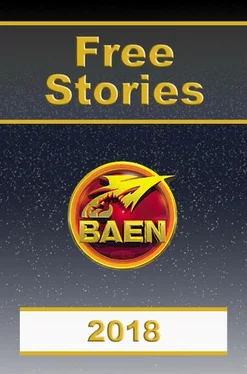

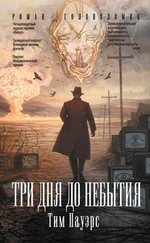
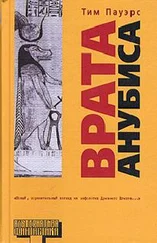

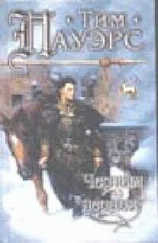

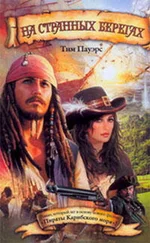
![Тим Пауэрс - Последние дни. Том 2 [litres]](/books/393813/tim-pauers-poslednie-dni-tom-2-litres-thumb.webp)
![Тим Пауэрс - Последние дни. Том 1 [litres]](/books/394090/tim-pauers-poslednie-dni-tom-1-litres-thumb.webp)
![Тим Пауэрс - Последний выдох [litres]](/books/402145/tim-pauers-poslednij-vydoh-litres-thumb.webp)